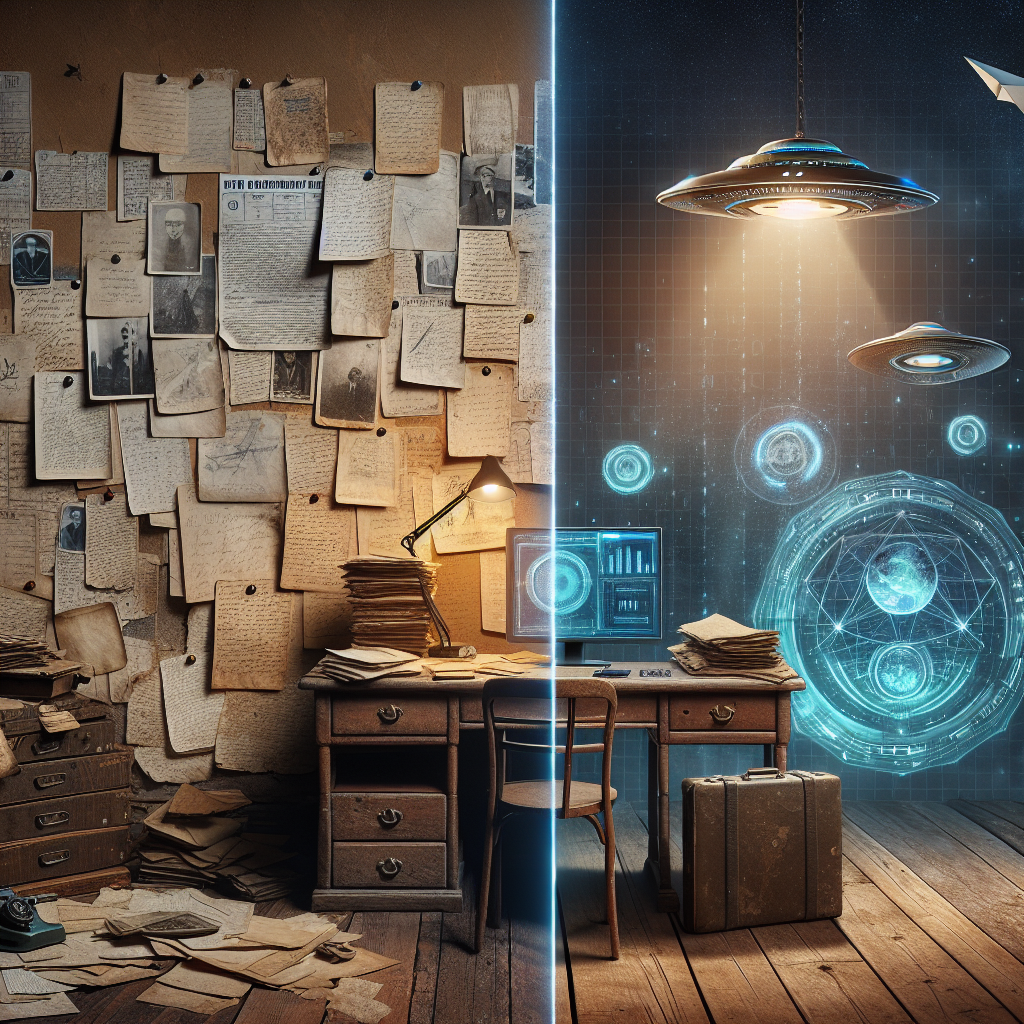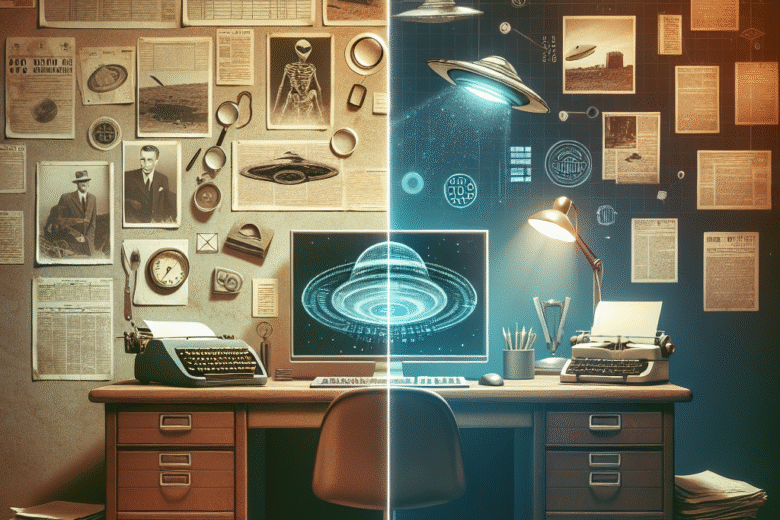The Evolution of UFO Evidence: From Paper to Digital
The fascination with unidentified flying objects (UFOs) has persisted throughout history, captivating the imaginations of people worldwide. As technology has advanced, so too has the way we document and analyze UFO sightings. What once required a pen and paper has now transitioned into a digital realm, offering more sophisticated tools and platforms for UFO enthusiasts and researchers alike. In this blog post, we’ll explore the evolution of UFO evidence from traditional paper methods to today’s digital landscape.
Introduction
UFOs have long been a subject of intrigue and mystery. From ancient cave paintings to modern-day video footage, humanity has been trying to capture evidence of these elusive objects. The methods of documenting and analyzing UFO sightings have evolved significantly over time, driven by technological advancements and changing public perceptions. This evolution not only reflects our growing technological capabilities but also our enduring curiosity about the unknown.
The Early Days: Paper Trails and Personal Accounts 📜
In the early days of UFO sightings, documentation was primarily confined to written accounts. Witnesses would report their experiences in letters or diaries, often accompanied by sketches. These paper trails served as the primary means of preserving UFO evidence, relying heavily on personal narratives and subjective interpretations.

During the mid-20th century, public interest in UFOs surged, leading to more formal documentation efforts. Government agencies, such as the United States Air Force’s Project Blue Book, began systematically collecting and analyzing UFO reports. These investigations relied on witness testimonies, photographs, and official reports, all meticulously recorded on paper. However, this method had its limitations, as it was often difficult to verify the authenticity of the evidence.
The Transition to Digital: A New Era of UFO Evidence 💻
The advent of digital technology revolutionized the way UFO sightings were documented and analyzed. With the rise of the internet and digital cameras, witnesses could easily capture and share their experiences with a global audience. This shift marked a significant turning point in UFO research, as digital evidence offered greater accessibility and opportunities for collaboration among researchers.

Digital platforms, such as forums and social media, became popular venues for discussing and sharing UFO sightings. Enthusiasts and researchers could now connect with others worldwide, exchanging information and analyzing evidence in real-time. This democratization of UFO research allowed for a more comprehensive understanding of sightings and patterns, breaking down geographical and cultural barriers.
Advanced Technologies: Enhancing UFO Research 🚀
As technology continues to advance, so do the tools available for UFO research. High-resolution cameras, satellite imagery, and artificial intelligence have all contributed to more sophisticated methods of capturing and analyzing UFO evidence. These technologies enable researchers to scrutinize sightings with greater accuracy and detail, providing more reliable and compelling evidence.
For instance, machine learning algorithms can now analyze vast amounts of data to identify patterns and anomalies, helping researchers discern genuine UFO sightings from hoaxes or misinterpretations. Additionally, drone technology allows for new angles and perspectives in capturing UFO footage, further enriching the available evidence.
The Role of Citizen Science in UFO Research 🌍
One of the most significant developments in UFO research is the rise of citizen science. With easy access to digital tools and platforms, ordinary individuals can now contribute to the field by documenting sightings, analyzing data, and participating in research projects. This collaborative approach leverages the collective power of the global community, enabling a more comprehensive and diverse understanding of UFO phenomena.
Citizen science projects, such as the Mutual UFO Network (MUFON), encourage individuals to report sightings and share their experiences. These initiatives not only provide valuable data for researchers but also foster a sense of community among UFO enthusiasts, empowering them to take an active role in the search for extraterrestrial life.
Conclusion
The evolution of UFO evidence from paper to digital has transformed the way we document and understand these mysterious phenomena. While early efforts relied on subjective personal accounts, today’s digital tools offer more reliable and accessible methods for capturing and analyzing UFO sightings. As technology continues to advance, the possibilities for UFO research are virtually limitless, promising exciting developments in our quest to uncover the truth about these enigmatic objects.
FAQs
Q: How has digital technology improved the documentation of UFO sightings?
A: Digital technology allows for more precise and accessible documentation, enabling witnesses to capture high-quality images and videos, which can be easily shared and analyzed globally.
Q: What role does citizen science play in UFO research?
A: Citizen science empowers individuals worldwide to contribute to UFO research by documenting sightings, analyzing data, and participating in collaborative projects, enriching the collective understanding of UFO phenomena.
Q: How do advanced technologies enhance UFO research?
A: Technologies such as AI and satellite imagery provide sophisticated tools for analyzing UFO evidence, allowing researchers to identify patterns and anomalies with greater accuracy.
Looking for a side hustle
Check out one of the best around atm
